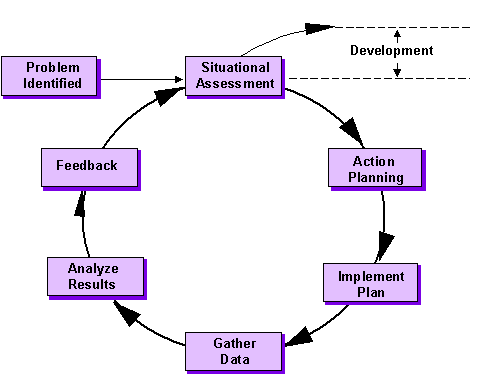
The OD cycle is a framework that is used to solve problems that have been identified in a firm. Since a problem might adversely affect a firm’s objectives, it becomes important for the management to get rid of it as soon as possible. The OD cycle outlines the steps the firm ought to follow to effectively get rid of the issuer at hand.
- Entry and Contracting
The cycle starts with the identification of a problem that might limit the firm from achieving its set objectives. Nevertheless, the process can begin after the management notes that there is a better way of improving the organization and, hence, it needs to be affected (France, 14). Therefore, it is evident that the process can be initiated even if no problem has befallen the firm.
- Collecting, Analyzing, and Feeding Back Results
After the identification of the problem or a new strategy that can be put in place, the following step is to gather all the necessary information pertaining to it to have a comprehensive understanding of it (HR People, 1). Thus, this stage can be referred to as the data collection stage, and, thus, various means of data collection and data analysis techniques as well have to be put in place so as to gauge whether the intended will have a significant effect on the firm.
- Action Planning/Action Taking
After the assessment of the noted problem, a means of intervention is formulated. Various forms of interventions that can be put in place include training the employees and encouraging team-building relationships as well.
- Intervention/Action Taking
At this stage, the chosen method of intervention is implemented. For instance, if it was noted that the firm would get rid of a given program by training its employees, the organization then has to organize the training programs. Additionally, if the firm thought the desired objective would be attained by introducing a preferred kind of technology, then it has to make sure that the technology is put in place and that the employees have the required skills to handle it.
- Evaluate, Measure, Institutionalize, and Close
This stage involves the collection of data to gauge the effectiveness of the measures that have been implemented to enable the organization to meet its goals. At this point, the decision-makers evaluate the entire process to figure out whether the proposed measures will enable the firm to achieve its goals (HR People, 1). In case they find that the intervention measures have yielded the desired fruits, then the OD process comes to an end.
